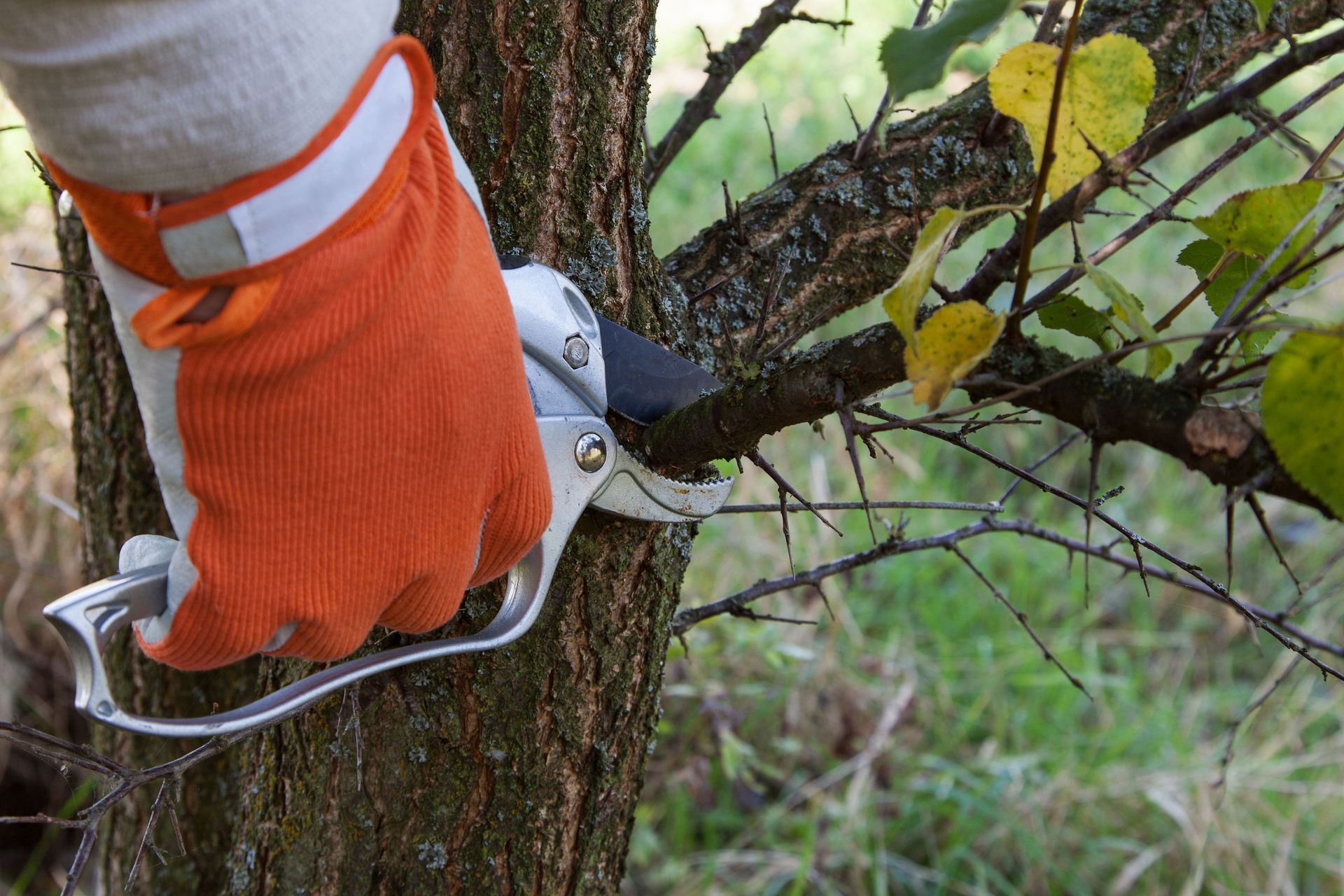September 5, 2025
Trees are a vital aspect of landscaping that can dramatically enhance the curb appeal of any property. Proper tree care ensures they not only survive but thrive, making your home exterior look inviting and well-maintained. This article covers crucial tips for maintaining your trees in top shape. Well-cared-for trees can contribute significantly to the aesthetic value of your property. According to This Old House, curb appeal can increase home value by up to 7%.
Selecting the Right Tree Species
Considering Climate and Zone
When choosing the right tree species, consider the specific climate and USDA hardiness zone of your area. Different tree species thrive under different temperature ranges and conditions. Planting trees unsuitable for your climate can lead to stunted growth or even tree death. Local nurseries can provide advice on which species align with your local conditions. Ensuring compatibility with the local ecosystem can prevent unnecessary maintenance challenges and make tree care easier.
Evaluating Soil Quality
Furthermore, soil quality is crucial for tree health and growth. Conduct a soil test to determine the soil pH and nutrient content before selecting a tree species. Different trees have varying soil requirements; some prefer acidic soil, while others thrive in alkaline conditions. Evaluating and amending your soil can facilitate better tree health and reduce the need for additional fertilization. Healthy soil supports robust tree growth, crucial for maintaining curb appeal.
Assessing Space and Growth Requirements
Understanding the mature size of a tree before planting is essential to prevent overcrowding. Consider the space a tree will need at maturity, including its height and canopy spread. Planting large trees too close to buildings or power lines can lead to safety hazards and additional pruning costs. Strategic placement ensures that trees grow to their full potential without hindrance. Proper spacing also contributes to a balanced and harmonious landscape design.
Researching Native vs. Exotic Species
Deciding between native and exotic tree species requires careful consideration. Native trees are typically more resilient to local pests and diseases, requiring less maintenance. Exotic species might offer unique beauty but can sometimes introduce ecological imbalances. Research is vital to understand the benefits and drawbacks of both choices. Selecting wisely enhances biodiversity and supports local wildlife.
Consulting With a Tree Expert
Engaging with a certified arborist or horticulturist can provide valuable insights into tree care. These experts can recommend tree species that suit your landscape and maintenance capacity. Implementation of professional advice can help avoid costly mistakes and ensure tree health. Regular consultations can also keep you informed about the latest tree care techniques. Expert guidance enhances the overall aesthetic and financial value of your property.
Planting Trees Properly
Choosing the Right Season
The timing of tree planting significantly impacts survival and growth rates. Ideally, trees should be planted in the fall or early spring. These periods allow roots to establish before facing extreme temperatures. Planting during the dormant season reduces stress on trees, leading to more vigorous growth in the active season. Correct timing is an essential first step toward ensuring healthy and beautiful trees.
Preparing the Planting Site
Proper site preparation involves clearing debris and ensuring the soil is suitable for planting. Dig a hole wide and deep enough to accommodate the tree's root system. Incorporate organic matter to improve soil fertility and drainage. Proper site preparation prevents issues like poor drainage that can lead to root rot. Well-prepared planting sites are foundational to promoting healthy growth and longevity.
Ensuring Correct Planting Depth
Additionally, planting depth is crucial; trees should be planted no deeper than their original container or nursery depth. Planting too deep can suffocate roots, while planting too shallow leaves roots exposed. Ensure that the root flare, where the roots spread at the tree's base, is at soil level. Proper depth allows tree roots to access necessary nutrients and oxygen. Correct planting depth secures a strong start for your trees.
Watering Immediately After Planting
Post-planting watering is essential to establish roots and reduce transplant shock. Water the tree thoroughly to ensure moisture reaches the root zone. New trees typically require more water than established ones. Developing a consistent watering schedule during the first growing season assists in root establishment. Immediate and adequate watering fosters a robust root system critical for long-term health.
Watering Techniques
Identifying Tree Watering Needs
Understanding specific watering needs varies by tree species and age. Young trees generally require more frequent watering compared to established trees. Monitoring soil moisture levels can prevent overwatering or underwatering. Adjusting water volumes based on weather conditions ensures trees receive adequate hydration. Knowledge of tree watering needs promotes growth and minimizes stress.
Understanding Seasonal Watering Adjustments
Water requirements change with seasons; awareness of this prevents excessive water or drought stress. During hot months, trees may need increased hydration to cope with evaporation and transpiration. Conversely, reduce watering in cooler months as tree activity slows. Tracking seasons helps synchronize care practices with tree needs. Seasonal watering adjustments optimize tree growth and health.
Implementing Slow Soaking Methods
Slow soaking methods efficiently deliver water to the tree root zone. Techniques like drip irrigation or soaker hoses prevent surface runoff and deep watering inefficiencies. Slow soaking allows water to infiltrate the soil gradually, reaching deep roots. This approach conserves water resources while ensuring the tree's hydration needs. Optimal tree hydration through soaking methods boosts resilience and vigor.
Evaluating Drip Irrigation Systems
Drip irrigation systems provide a controlled water supply directly to the roots. These systems reduce water wastage and deliver moisture precisely where needed. Evaluating the compatibility of such systems with your landscape configuration is vital. Installing drip systems can facilitate easy and consistent tree watering. This irrigation method supports sustainable and effective tree hydration strategies.
Pruning Practices
Timing for Health and Growth
The timing of pruning affects tree care and aesthetics. Prune during dormancy, typically in late winter or early spring, for best results. Avoid pruning during heavy sap flow to prevent stressing the tree. Correct timing enhances healing and encourages robust spring growth. Scheduled pruning is a proactive step towards healthy and aesthetically pleasing trees.
Understanding Pruning Cuts and Techniques
Effective pruning involves understanding the nature and purpose of different cuts. Thinning cuts remove entire branches at the point of origin, improving light and air penetration. Heading cuts shorten branches and encourage dense growth. Mastering proper techniques prevents damage and shapes tree structure. Precision in cuts optimizes tree form and health.
Removing Dead or Diseased Branches
Regularly removing dead or diseased branches promotes overall tree health. Diseased branches can spread infection, jeopardizing the entire tree's vitality. Identifying unhealthy limbs necessitates timely removal before deterioration spreads. Cleaning pruning tools between cuts prevents pathogen transmission. Consistent removal of compromised branches sustains vibrant and healthy trees.
Shaping for Aesthetics and Structure
Pruning for shape enhances both tree aesthetics and structural integrity. Well-pruned trees exhibit balanced shapes, contributing to a polished landscape appearance. Structural pruning supports the development of a strong central leader and appropriate branch spacing. Shaping also mitigates risks of breakage during adverse weather. Incorporating shaping practices maximizes curb appeal through visual harmony.
By following these comprehensive tree care tips, you can greatly enhance your property's curb appeal. Healthy, well-maintained trees are not only beautiful but also add significant value to your home. Commit to consistent care, and your trees will thank you with longevity and lush growth. Contact Van Etten & Sons Tree and Crane Service today for more information.





